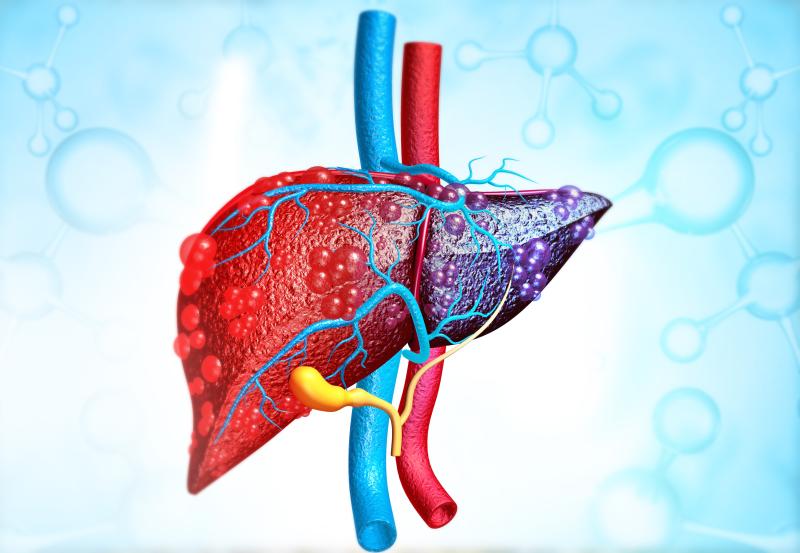Better scores needed for predicting advanced fibrosis in nonobese NAFLD patients





There is a need to develop a better predictive tool for detecting nonobese patients with nonalcoholic fatty liver disease (NAFLD) at risk of advanced fibrosis, according to a new Singapore study.
“Fibrosis-4 (FIB4) remains the most accurate noninvasive score in predicting fibrosis. However, the application of noninvasive scores on nonobese patients needs to be interpreted within its clinical context,” researchers said. “Noninvasive scores are not fully reliable in predicting fibrosis in the nonobese population.”
The researchers enrolled 263 NAFLD patients, of whom 206 (mean age, 49.5±12.5 years; 53.9 percent male) had body mass index (BMI) ≥25 kg/m2 and were categorized as obese; the remaining 57 (mean age, 54.0±12.9 years; 47.4 percent male) had BMI <25 kg/m2. Almost half of the participants had diabetes mellitus, and majority had hypertension and dyslipidaemia. [J Gastroenterol Hepatol 2020;doi:10.1111/jgh.15154]
Bilirubin was higher in nonobese patients (p=0.02), as was prothrombin time (p=0.025). In comparison, albumin (p=0.018) and platelet count (p<0.001) were both reduced in this subgroup.
In contrast, both groups were statistically comparable in terms of median NAFLD activity score (NAS; 4 vs 4) and other histological characteristics, such as lobular inflammation, steatosis grade, and ballooning. The prevalence of nonalcoholic steatohepatitis (NASH) was likewise similar between patient subgroups (61.4 percent vs 63.1 percent; p=0.710). The same was true for advanced fibrosis (26.3 percent vs 31.6 percent; p=0.447).
Of all the noninvasive scores employed, FIB4 at a cut-off value of >3.25 showed the best predictive power for advanced fibrosis in the study sample. The resulting area under the receiver-operator characteristic curve (AUROC) was 0.68. This was even better in obese patients, with an AUROC of 0.78.
Notably, all three noninvasive scores (FIB4, NAFLD fibrosis score, aspartate aminotransferase-to-platelet ratio) performed worse in nonobese patients than in their obese comparators.
The same was true for the other measures of predictive performance. FIB4 sensitivity, for example, was better in those who were obese (0.66 vs 0.60), as was its specificity (0.72 vs 0.48). A similar pattern of effect was observed for FIB4’s positive (0.54 vs 0.30) and negative (0.82 vs 0.76) predictive values.
The two other noninvasive scores were less powerful than FIB4 but nevertheless reflected the discrepancy associated with obesity.
“Within the limitations of our biopsy cohort, nonobese patients with NASH may have a similar propensity for advanced fibrosis as obese patients,” the researchers said. “This underscores the clinical significance of nonobese NASH and concurrently highlights the lack of understanding of antecedent factors both common and disparate in obese and nonobese NASH.”
“This may further give impetus to investigate and treat nonobese patients with NAFLD/NASH as aggressively as obese patients, given their potentially equal propensity for progression to advanced disease,” they added.
Moreover, the researchers said that their findings highlight “an unmet need for developing/optimizing nonobese NASH specific noninvasive scores to screen for advanced fibrosis in a population that is often poorly recognized.”